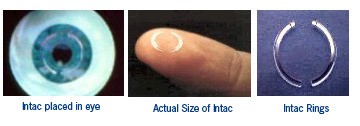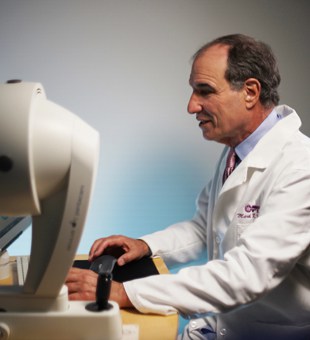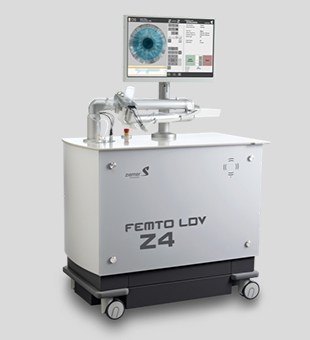Offices in Hayward, Castro Valley, Concord, & San Jose

Intacs™ / Intra Corneal Rings (ICR)
In April of 1999, the FDA approved a new form of vision correction surgery, which could treat up to -3.50 diopters of nearsightedness (myopia) using a non-laser technique. The procedure involves implanting plastic (polymethylmethacrylate – PMMA), semi-circular segments into the mid-periphery of the cornea. The thickness of the plastic segments determines the amount of correction. Although we no longer routinely use Intacs to treat nearsightedness (myopia), we use Intacs to help patients with keratoconus or induced “ectasia” following LASIK. Dr. Mandel was the first in Northern California to perform Intacs in 1999, and was the only surgeon in the United States to be chosen by the Kearvision company (who developed Intacs) to implant Intacs in Karavision employees.
Procedure
The intrastromal corneal ring (ICR) or Intacs™ achieve their result by altering the front corneal curvature of the cornea. The surgery is performed by making a small 1.5mm incision in the cornea (the clear window of the eye) at approximately 70 percent corneal depth. Using the femtosecond laser, pockets, or tunnels, are then formed in the periphery of the cornea. The plastic segments are then inserted into these tunnels away from the central portion of the vision. The tunnels can be created manually or by using the femtosecond laser. While Dr. Mandel is experienced with both techniques, the femtosecond laser is used in almost every case.

The outpatient surgical procedure is not painful due to powerful anesthetic numbing eye drops. The post-operative course consists of very mild discomfort similar to an eyelash in the eye for the first 24 hours after the procedure. Antibiotic and cortisone eye drops are used post-operatively as are lubricating drops to condition the surface of the cornea.
Risks
Although no procedure is risk free, the risks of serious damage to the eye from Intacs surgery are minimal and include the possibility of infection introduced at the time of surgery, surface cells of the eye (epithelium) growing into the tracks where the rings have been implanted requiring removal of the ring, and the remote possibility of permanent damage to the cornea or the inside of the eye. Any surgery on the eye can result in a permanent decrease or loss of vision or blindness. Fortunately, severe complications are exceedingly rare. Side effects of Intacs include glare, halos, difficulty with vision at night, and fluctuation of vision throughout the day.
Reversibility
If for any reason a patient is not satisfied with the vision following implantation of the ring segments they can be removed.
Expectations of Intacs Surgery
For keratoconus, or LASIK-induced ectasia, the goal of Intacs surgery is not to eliminate the need for glasses or contact lenses, but to help reshape the corneal surface to allow the patient to be able to wear contact lenses longer throughout the day or to achieve a better or more comfortable contact lens fit. It does not cure or eliminate keratoconus or post-LASIK ectasia and does not halt the progression of keratoconus or post-LASIK ectasia. Corneal collagen crosslinking can halt the progression of keratoconus or LASIK-induced ectasia, but NOT Intacs.
Schedule a Consultation Today
Mark R. Mandel MD and the team at Ophthalmic Medical Associates, Inc. are leading providers of Intacs in the San Francisco East Bay Area. If you suffer from keratoconus, and would like to learn if you are a candidate for this procedure, contact one of our convenient office locations in Hayward, Castro Valley, Concord by calling 877-210-2020 ext. 3.




